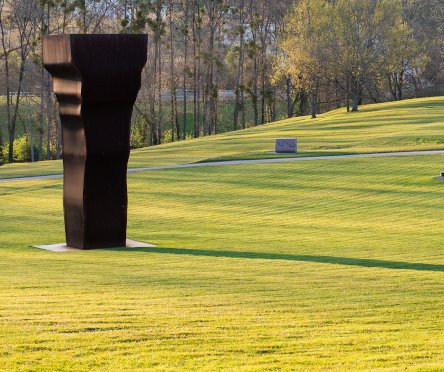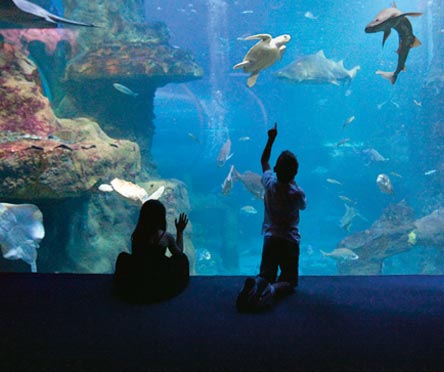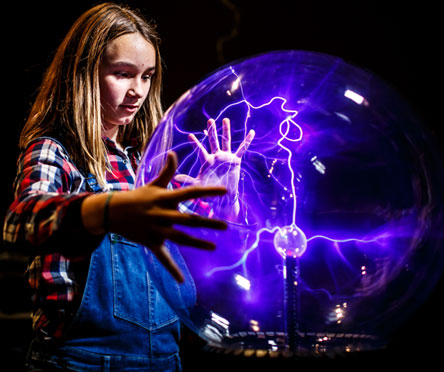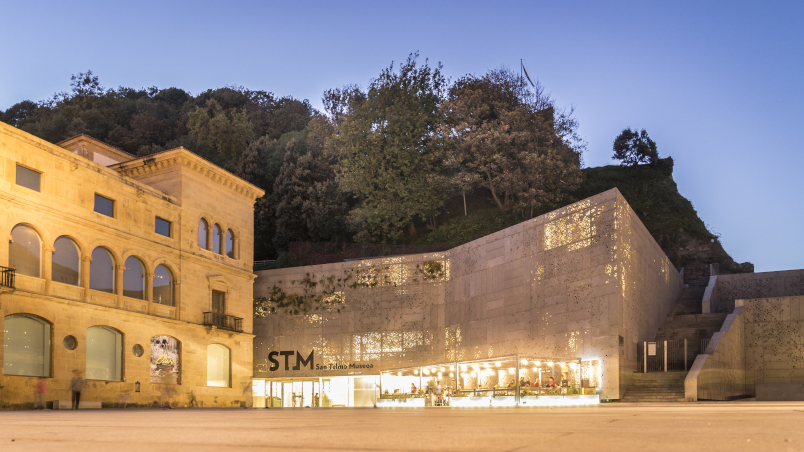Museums
Exhibitions and installations
The city has a wide and varied selection of museums to satisfy even the most curious minds with their excellent exhibitions and modern installations.
Museo Chillida Leku
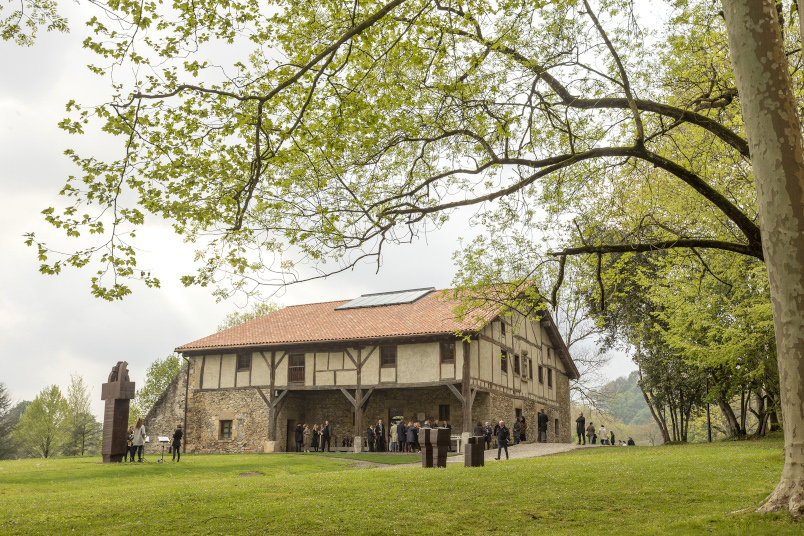
Interesting links
Chillida Leku is home to the most comprehensive body of works by Eduardo Chillida (San Sebastián, 1924-2002), including his archive. Built in Zabalaga, a former farmhouse owned by the author and only a few minutes from the city centre, Chillida-Leku proposes 150 pieces that invite reflection.
ACCESSIBILITY
Information on the accessibility to Chillida Leku Museum
 Inside of Chillida Leku museum
Inside of Chillida Leku museum
San Telmo Museoa
Interesting links
ACCESSIBILITY
Information on the accessibility to San Telmo Museum
The San Telmo Museum can be found in the Old Town, in a magnificent 16th century building formerly used as a Dominican convent. Previously also used as artillery barracks, the building became a municipal museum in the 20th century. The Renaissance style cloister, the ancient church decorated with canvases by the Catalan artist, José María Sert, and all of the other Museum buildings were refurbished and extended in 2011.
The complete overhaul served to revise the Museum concept, bringing a change in its definition, aims and modus operandi. The San Telmo Museum, inaugurated in 1902, is the oldest museum in the Basque Country. It was renovated to become the Museum of Basque Society and Citizenship and its purpose is to show the cultural and historic past of Basque society.
The museum is also home to different high-quality temporary exhibitions.

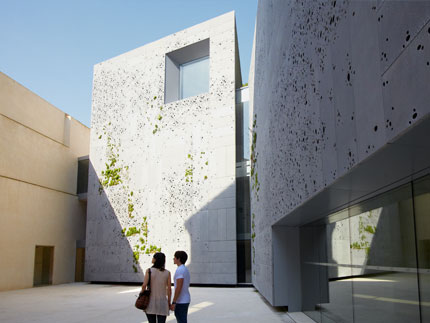
Aquarium ![]()
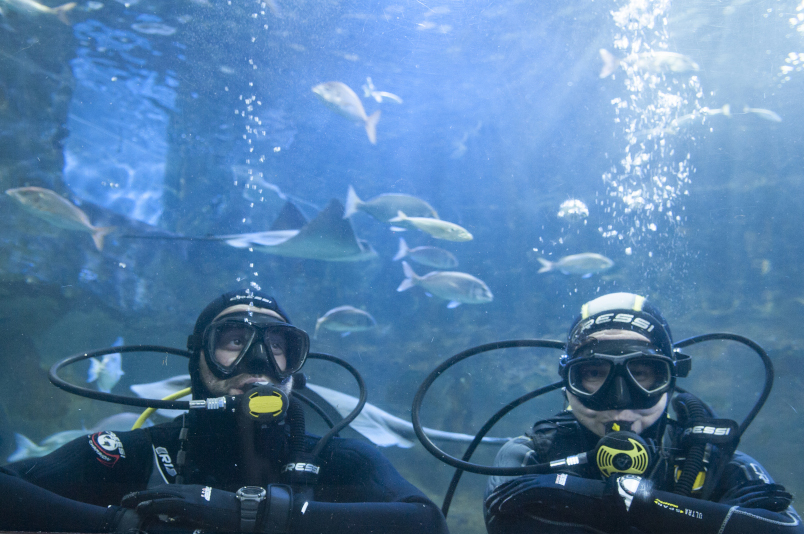
Interesting links
ACCESSIBILITY
Information on the accessibility to the Aquarium
Almost a century old, but younger than ever since it was revamped in 2008, the San Sebastián Aquarium can boast itself to be one of the most modern oceanographic museums in Europe.
The Aquarium has made the dreams of the smallest among us come true, with its specimens of "Nemo”, the famous fish from the film of the same name. Adults too are delighted to vastly improve their knowledge of the marine environment.
Making your way through the 360º acrylic tunnel suspended in the water, surrounded by huge sharks and enormous manta rays, or touching live fish in the touch tank are some of the most entertaining activities available at the museum.
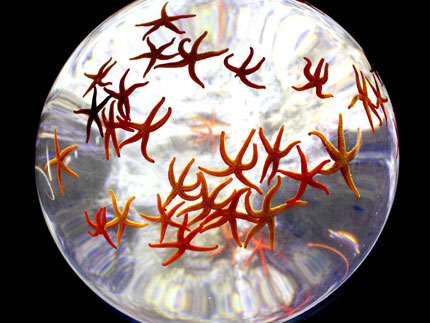
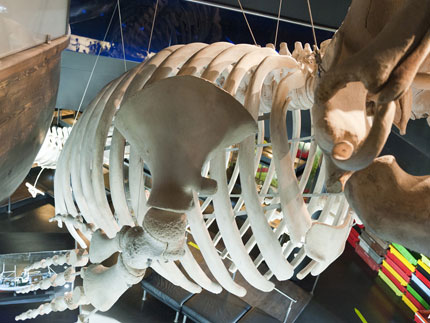
Eureka! Zientzia Museoa ![]()
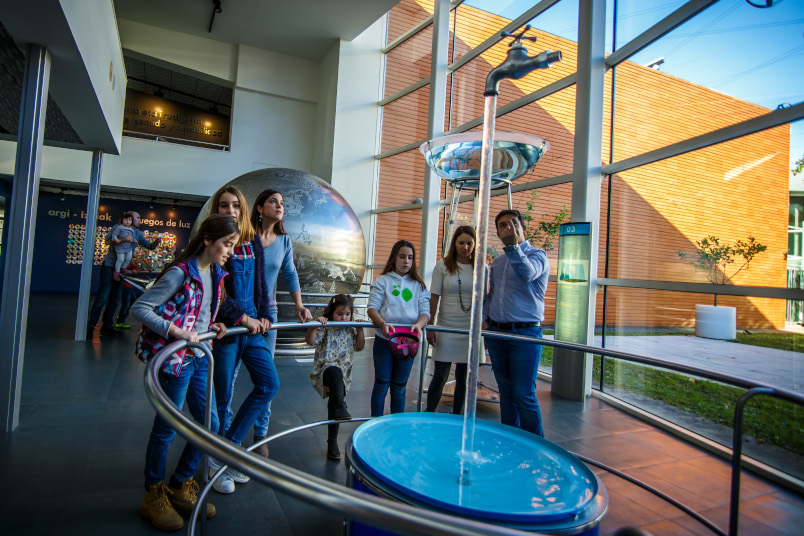
ACCESSIBILITY
Information on the accessibility to Eureka! Science Museum
Discover the most entertaining side of science! Combining learning with having fun can be done at the Eureka! Zientzia Museoa. Added to the permanent exhibition with over 172 models, the Museum also has a Animalia zone for general public, where you can see different ecosystems and the animals (rainforest snakes, desert lizards and salt water fish ) that inhabit them in an effort to understand the importance of preserving our natural environment. There are guided activities every weekend, a digital Planetarium with a varied programme, and a play area of 300m² with all sorts of simulations to take visitors off into a world of sensations.

Cristobal Balenciaga Museum
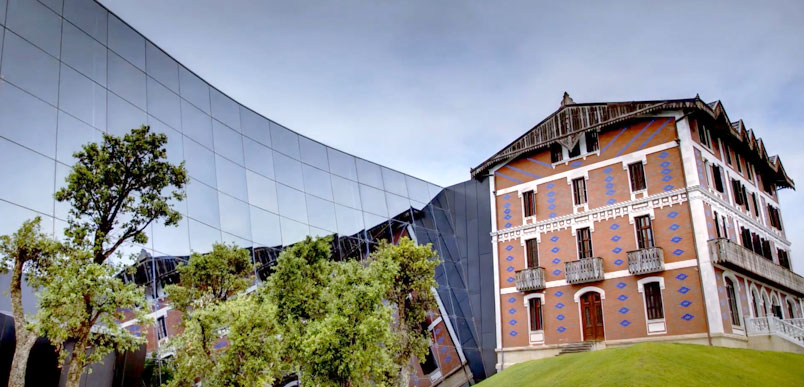 Outside of the Balenciaga museum
Outside of the Balenciaga museum
Designer and couturier Cristóbal Balenciaga, considered one of the most important creators of houte couture, was born in 1895 in the fishing village of Getaria, 29 km from San Sebastian. This is home to the museum that pays tribute to his life, career and style. The museum is home to a unique collection of over 5.000 pieces designed by Balenciaga. It contains two spaces: the Aldamar building, the former residence of the Marquis of Casa Torre, former residence of the Marquises of Casa Torre, grandparents to Queen Fabiola of Belgium and mentors to Balenciaga in the early years of his career, and the large glassed-in space overlooking the coast.
Albaola Itsas Kultur Faktoria
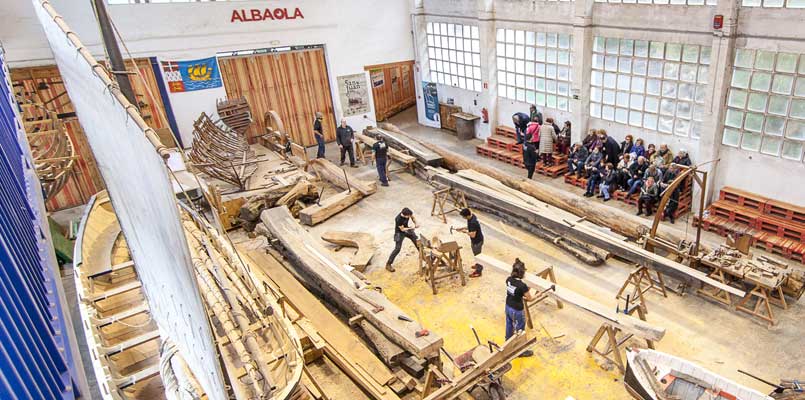 Albaola Itsas Kultur Faktoria
Albaola Itsas Kultur Faktoria
A shipyard-museum where heritage ships and boats are built in front of the public, using boatbuilding tools and methods and reviving traditional crafts such as blacksmithing. The construction of the ‘San Juan’, a 16th-century galleon, stands out; a replica of a whaling ship built in Pasaia almost 500 years ago and sunk off the Canadian coast in 1565. A unique and inspiring spot in Pasaia, a coastal town bordering Donostia.
Sagardoetxea ![leyenda euskadi gastronomika]()
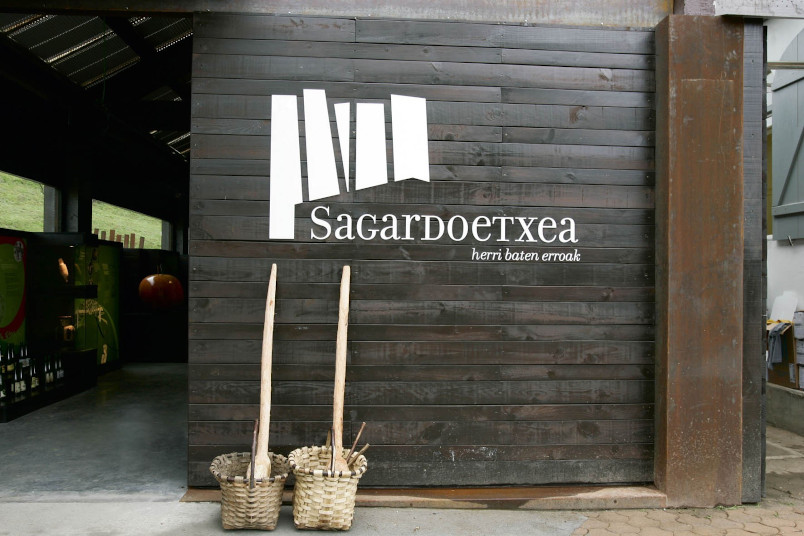
Located in Astigarraga, at the foot of an apple orchard, is the Sagardoetxea, the Basque Cider Museum, a centre equipped with cutting-edge resources and technologies where information panels, interactive material, photographs and games are used to tell us about the history, the past, present and future of the exciting world of apples, cider and its cultural importance in the Basque Country.
Casa de la Historia
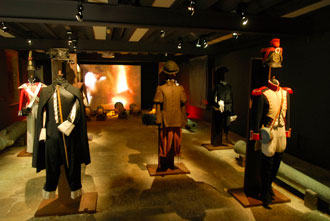 Period costume exhibition in the House of History
Period costume exhibition in the House of History
San Sebastián puts its history on display in the Castillo de la Mota at the top of Monte Urgull.
A tour guided by audio-visuals, models, objects and scenographies explains the features to have defined the lives of people in San Sebastián over time; a narration looking at the more than 800 years of a young, lively city.
Euskal Itsas Museoa - Museo Marítimo Vasco
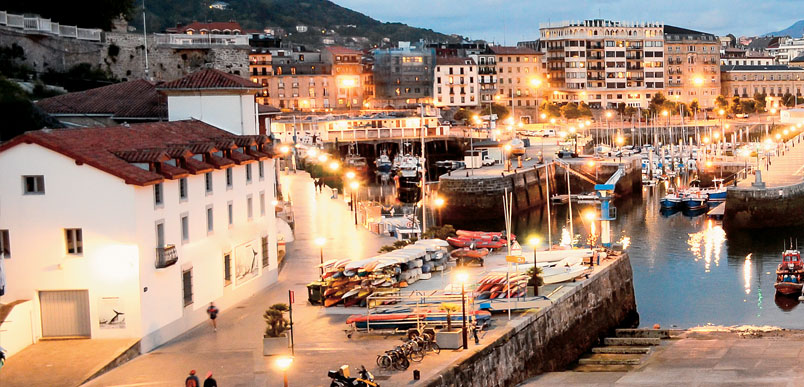 Euskal Itsas Museoa
Euskal Itsas Museoa
Audioguide
Euskal Itsas Museoa
The Euskal Itsas Museoa invites visitors in to learn the secrets shared with the sea by the Basques and the people of San Sebastián.
The Museum stands at the heart the harbour, in the former San Sebastián Consulate (port authority building), where it preserves, studies and conveys the history of the Basques and the sea.
Museum Cemento Rezola
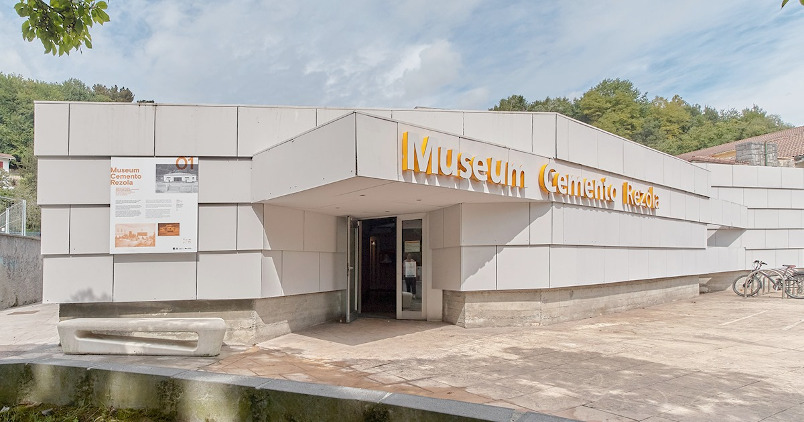
Visit the Cemento Rezola Museum exhibition
Museum Cemento Rezola is a place to discover the important role cement has player in our civilization. Isn't it surprising that an invention as recent as concrete has managed to transform our planet so drastically? What actually goes on in a cement fectory? How is concrete utilised? Where do the raw materials come from? What measures are taken to reduce enviromental impact? Why is the cement industry a key figure in the elimination of industrial waste? The audo-visuals, simulations and interactive modules at Museum Cemento Rezola will provide you with insight in finding the answers to these and other questions
D’Museoa- San Sebastian Diocesan Museum

The San Sebastian Diocesan Museum is located in the Nave Santa Marta of the Basílica de Santa María (18th century) and has a permanent collection that includes more than 150 works of art - sculpture, paintings and precious metalwork - arranged over an area of 400m2, a sample of the cultural and artistic heritage of the diocese.
The permanent exhibition includes medieval, modern and contemporary works of art, and there are also a number of spaces for temporary exhibitions. Rodrigo de Zuazola, Ambrosio de Bengoetxea, El Greco, Ribera, Beobide, Chillida and Oteiza, among others, show us our evolution from the Middle Ages to nowadays.
More information
